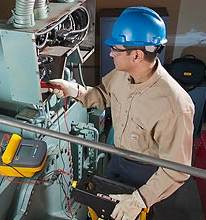Always Use PPE
 A lot of our members work in countries where PPE (personal protective equipment) is regulated or they work for companies/organizations which take employee safety seriously. Unfortunately, there are places/companies where little or not thought is given to safety and daily peoples lives are put at risk. If you are working on live circuits then you should always use PPE.
A lot of our members work in countries where PPE (personal protective equipment) is regulated or they work for companies/organizations which take employee safety seriously. Unfortunately, there are places/companies where little or not thought is given to safety and daily peoples lives are put at risk. If you are working on live circuits then you should always use PPE.
If you are subject to regulations (country or company) you should follow these. If you work where there are not regulations or they are inadequate you need to look after your own safety. When working on live circuits you should be using the following:
- Insulated tools which are rated for the category of work being carried out
- Safety glasses (or a face shield with safety glasses)
- Flame resistance clothing or overalls
- Insulating gloves
- Safety shoes with electrically insulating soles (stand on insulating mats if available)
- Remove lose articles (watches, jewelry, etc.)
The person primarily responsible for your safety is yourself. If anything happens to you it affect you and your family far more than anyone else. Always use PPE at all times when working on live equipment.
Note: the recommendations are relevant for light electrical work. If a risk assessment identifies a significant 'Arc Flash' risk, then full flash protective gear should be worn. On higher voltages or special installations, additional PPE may be required.